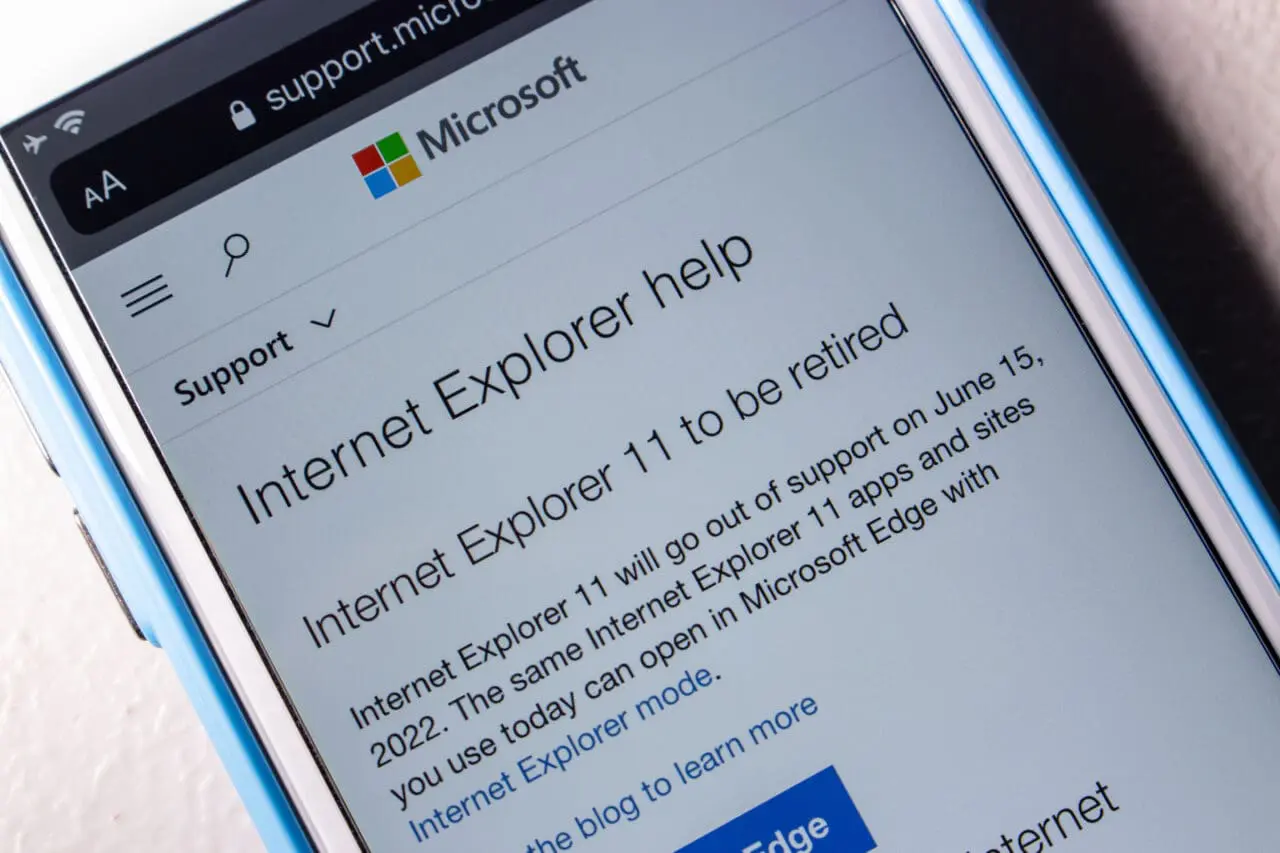

Microsoft has announced the retirement of its famous Internet Explorer browser, which is now officially out of support as of June 15, 2022, for specific versions of Windows 10.
First announced in May 2021 and after 25+ years) Microsoft has announced that “Internet Explorer (IE) is officially retired and out of support as of today, June 15, 2022”. Microsoft’s blog points to how the web and other browsers have evolved to the point where incremental improvements to Internet Explorer couldn’t match the general improvements to the web at large. This led to the introduction of Microsoft Edge with Windows 10 in 2015 and IE’s phasing out and retirement. Although I had had 95 per cent of the browser market back in 2004, new dominant players in the browser have emerged – Google Chrome, Apple’s Safari, and Mozilla Firefox (and Microsoft’s Edge, as just mentioned).
Microsoft says that opening Internet Explorer will progressively redirect users to Microsoft Edge with IE mode over the next few months. Here, users will still see the Internet Explorer icon on their devices (e.g. on the taskbar or in the Start menu). Still, if they click to open Internet Explorer, Microsoft Edge will open instead with easy access to IE mode.
IE mode has been added to Microsoft Edge because some websites only work with IE. For instance, they may have been built with old technology and may not function properly with modern browsers.
Also, for some IT businesses that may be using legacy sites as part of their normal business processes, IE mode can be automated so that those pages launch in IE mode automatically for users.
As part of the redirection process, Microsoft says that users will have their data, such as favourites, passwords and settings, imported from IE to help the transition. If a user wants to delete or manage their data at any point afterwards, Microsoft says they can do so in Edge from the Settings menu.
Microsoft has said that IE will eventually be disabled permanently as part of a future Windows Update, at which point the IE icons on users’ devices will be removed.
The first versions of Windows from which IE has been retired are Windows 10 Home, Pro, Enterprise, Edu and IoT (there is no IE in Windows 11), but IE will not be immediately removed on all these versions. Instead, there will be progressive re-directs to Microsoft Edge over the next few months.
Also, for some versions of Windows currently in support and used in critical environments such as in-support Windows 10 LTSC releases (including IoT) and all Windows Server versions, as well as Windows 10 China Government Edition, Windows 8.1, and Windows 7 with Extended Security Updates (ESUs), Microsoft will continue to support IE on those versions until they go out of support.
Internet Explorer played an essential part in developing the web. Nevertheless, the web and the browser market have changed dramatically over time. Notably, the rise of smartphones with pre-installed browsers – Apple with Safari and Android with Google Chrome – and Mobile and tablet internet usage overtaking desktop saw Chrome rise to the top, and Microsoft’s IE (and now Edge) fell behind. As Microsoft pointed out, IE was no longer up to the demands of the modern web, and Microsoft had already invested in Edge as the successor. In 2020, Microsoft upped its game in the browser wars by releasing a version of Edge based on Chromium. This may be one of the reasons why Edge has just pipped Safari to second place in the browser market with a 9.65 per cent share, but this is still a long way behind Google’s Chrome. Some businesses (IT) that still need IE in some critical environments will, of course, be glad that support continues for some versions, and the use of IE mode is a useful way to help with the transition from IE to Edge for many users.
This website uses cookies to improve your experience. Choose what you're happy with.
Required for the site to function and can't be switched off.
Help us improve the website. Turn on if you agree.
Used for ads and personalisation. Turn on if you agree.
This website uses cookies to improve your experience. Choose what you're happy with.
Required for the site to function and can't be switched off.
Help us improve the website. Turn on if you agree.
Used for ads and personalisation. Turn on if you agree.